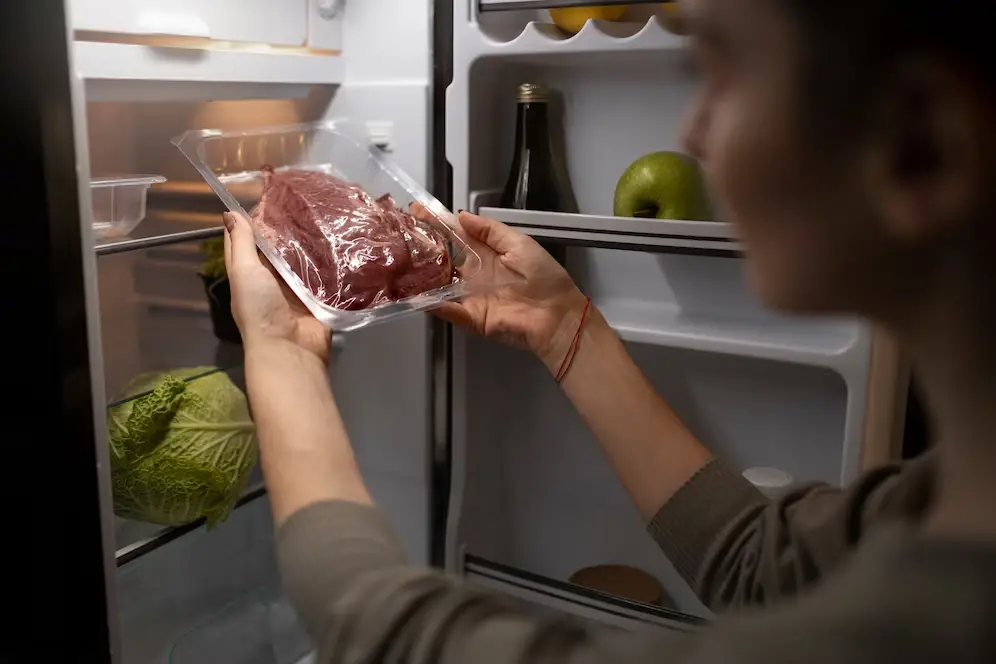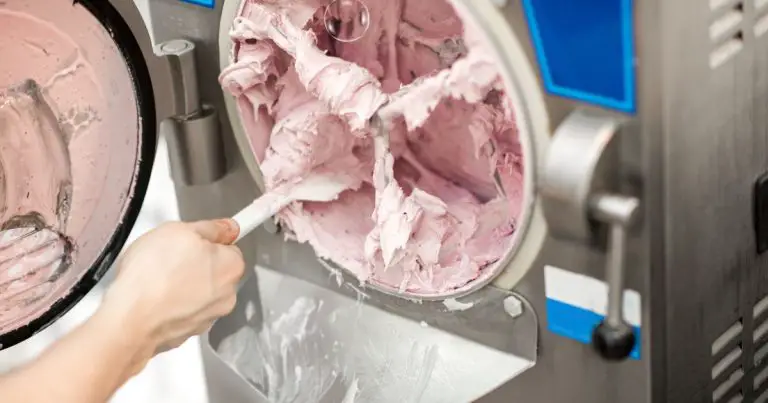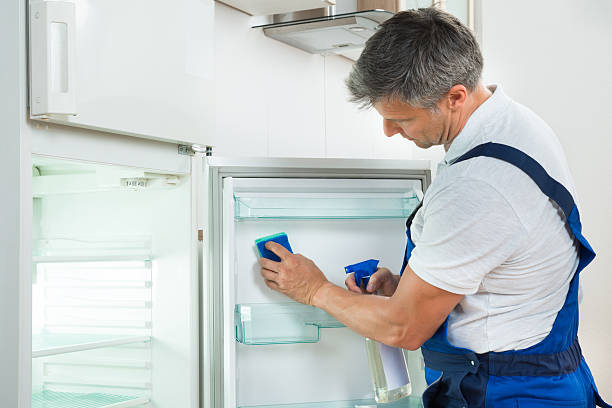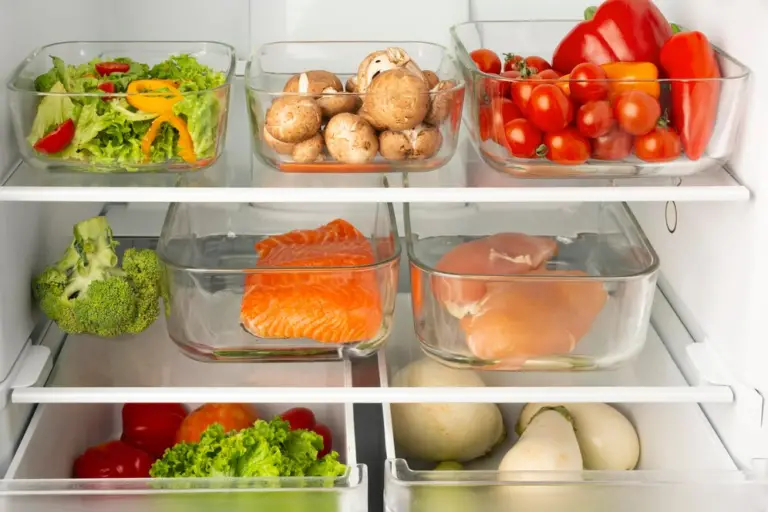The Ultimate Guide to Organizing Your Fridge

Key Takeaways
- Organizing your fridge effectively extends the shelf life of your groceries, reduces the risk of foodborne illness, and prevents cross-contamination, ensuring food safety for you and your family.
- A well-organized fridge maximizes space, minimizes food waste, and makes meal planning and preparation more efficient, saving you time and money in the long run.
- Regularly cleaning, decluttering, grouping similar items, utilizing storage solutions, arranging items according to temperature zones, and rotating items help maintain an orderly fridge, simplify cooking, reduce food waste, and contribute to a healthier lifestyle and sustainable kitchen practices.
A well-organized refrigerator keeps food fresh. Meal planning becomes simpler. Grocery shopping is easier too. In this guide, we’ll explain why organization matters.
We’ll provide step-by-step instructions. These will help you organize your fridge effectively. We’ll also address common questions. Our goal? To ensure you maximize your refrigerator’s potential.
Why bother with organization? It prevents food from spoiling prematurely. It saves you money. Plus, it saves time during meal prep. With a tidy fridge, you’ll know what ingredients you have. No more last-minute runs to the store.
Our step-by-step instructions break down the process. You’ll learn how to declutter, group similar items, and use storage solutions. It’s an asset to your kitchen and your lifestyle.

Why It’s Important to Organize Your Fridge?
Here are some reasons to understand why having a well organized fridge is your asset.
1. Maintaining Food Safety
Proper organization within your refrigerator is crucial for maintaining optimal temperatures, thereby preventing food spoilage and reducing the risk of foodborne illness.
By arranging your food items strategically, you ensure that perishable items remain in the coldest areas of the fridge, such as the bottom shelves, while non-perishables are stored in slightly warmer regions.
This organization not only extends the shelf life of your groceries but also minimizes the chance of cross-contamination between raw and cooked foods, safeguarding the health of you and your family.
2. Maximizing Space
An organized fridge maximizes space. You can store more items. It’s easier to keep track of what you have. No more forgotten leftovers hidden in the back.
Everything has its place. Clear shelves and labeled containers help you see what you need. You’ll waste less food. And less money too.
Plus, meal planning becomes a breeze. With a well-organized fridge, you’ll always know what’s in stock. And you’ll have more room for fresh groceries. It’s the key to a more efficient kitchen and a happier you.
3. Improving Efficiency
With a well-organized fridge, finding what you need is a breeze. No more searching through cluttered shelves. You’ll waste less food because nothing gets lost or forgotten.
This means more money saved. Plus, meal preparation becomes quicker. Ingredients are easy to locate. You’ll spend less time rummaging around and more time cooking. It’s a time-saver for busy schedules.
And it makes mealtime stress-free. With everything in its place, you’ll feel more efficient and in control of your kitchen. Organizing your fridge isn’t just about tidiness. It’s about making your life easier and more enjoyable.

Steps on How to Effectively Organize Your Fridge
Here are some easy to follow steps to help you organize your fridge.
Step 1: Declutter and Clean
Start by clearing out your fridge. Take everything out. Check for expired or spoiled items. Toss them away. Then, grab mild detergent and warm water.
Wipe down shelves, drawers, and surfaces. Give them a good clean. This removes any spills or stains. It keeps your fridge fresh and hygienic. Don’t forget the corners and crevices.
A thorough cleaning sets the stage for effective organization. It ensures your food stays fresh for longer. Plus, it gives you a clean canvas to work with. Ready to transform your fridge into an organized oasis.
Step 2: Group Similar Items Together
Organize your food items by type. Group dairy products together. Separate fruits and vegetables. Arrange beverages in one area. Keep condiments in another.
Store leftovers separately. This simple categorization system makes finding items a breeze.
No more rummaging through a jumble of food. By grouping similar items, you prevent overcrowding in specific areas. Each category has its designated space.
It creates order and maximizes efficiency. Plus, it helps you keep track of what you have. With everything in its place, meal prep becomes a smoother process. Say goodbye to fridge chaos and hello to organization.
Step 3: Utilize Storage Solutions
Consider investing in storage solutions. Get storage bins, containers, and organizers. They help you make the most of your fridge space.
Keep items neatly arranged and easy to access. Opt for clear containers. This way, you can see what’s inside without opening them.
Label containers for added convenience. It makes finding items even easier. With storage solutions, every inch of your fridge is optimized.
No more wasted space or forgotten groceries. Your fridge becomes a well-organized haven for your food. Enjoy the benefits of efficient storage and streamlined meal prep.
Step 4: Arrange According to Temperature Zones
To organize your fridge effectively, arrange items according to temperature zones. Keep dairy and raw meat on bottom shelves for the coldest temperatures.
Place fruits and veggies in crisper drawers to maintain freshness longer. Condiments and beverages belong on door shelves where it’s slightly warmer.
This arrangement optimizes storage conditions, preserving food quality and safety. By strategically placing items, you ensure perishables stay fresh and reduce food waste.
Following these guidelines helps maintain an orderly fridge and makes it easier to find what you need when preparing meals. Efficient organization saves time and money, benefiting both your kitchen and your wallet.
Step 5: Regularly Rotate Items
Make it a habit to rotate items in your fridge regularly. Put newer items at the back. Bring older items to the front.
This ensures nothing gets forgotten and expires. Preventing food waste is key. By rotating items, you use everything before it goes bad. It’s a simple yet effective way to save money and reduce waste.
Plus, it keeps your fridge organized and clutter-free. With regular rotation, you’ll always have fresh ingredients on hand for your meals. Say goodbye to forgotten groceries and hello to efficient food management.
Conclusion
With consistent upkeep, your fridge stays orderly. Meal prep becomes effortless. Regular maintenance extends food freshness. It reduces spoilage risks. Dedicate time to organizing. Save frustration and disappointment.
No more searching for items or finding expired foods. An organized fridge simplifies cooking. It cuts down on food waste. You’ll save money in the long run.
These practices make meal prep smoother. Enjoy creating delicious dishes without hassle. A well-maintained fridge is essential. It’s the heart of an efficient kitchen.
It promotes a healthier lifestyle. And it contributes to sustainability. Embrace these habits for a happier, more streamlined kitchen experience.
FAQs
Q1. How often should I clean my fridge?
It’s recommended to clean your fridge at least once a month to maintain food safety and prevent odors.
Q2. Can I store eggs on the door shelves?
It’s best to store eggs on a middle shelf where temperatures are more consistent. The door shelves experience temperature fluctuations, which can affect egg freshness.
Q3. Should I keep raw meat on the top or bottom shelf?
Raw meat should be stored on the bottom shelf to prevent cross-contamination with other foods and to ensure it stays at a consistent, cold temperature.
Q4. Do I need to defrost my freezer regularly?
Yes, regular defrosting prevents ice buildup, which can reduce the efficiency of your freezer and lead to freezer burn on food items.
Q5. How can I organize a small fridge?
Utilize stackable containers, door organizers, and adjustable shelves to maximize space in a small fridge. Consider removing unnecessary items and regularly decluttering to maintain organization.
Q6. Is it safe to store leftovers in the fridge for multiple days?
Leftovers can typically be safely stored in the fridge for 3-4 days. Make sure to label containers with the date to track freshness and consume within a reasonable timeframe.






